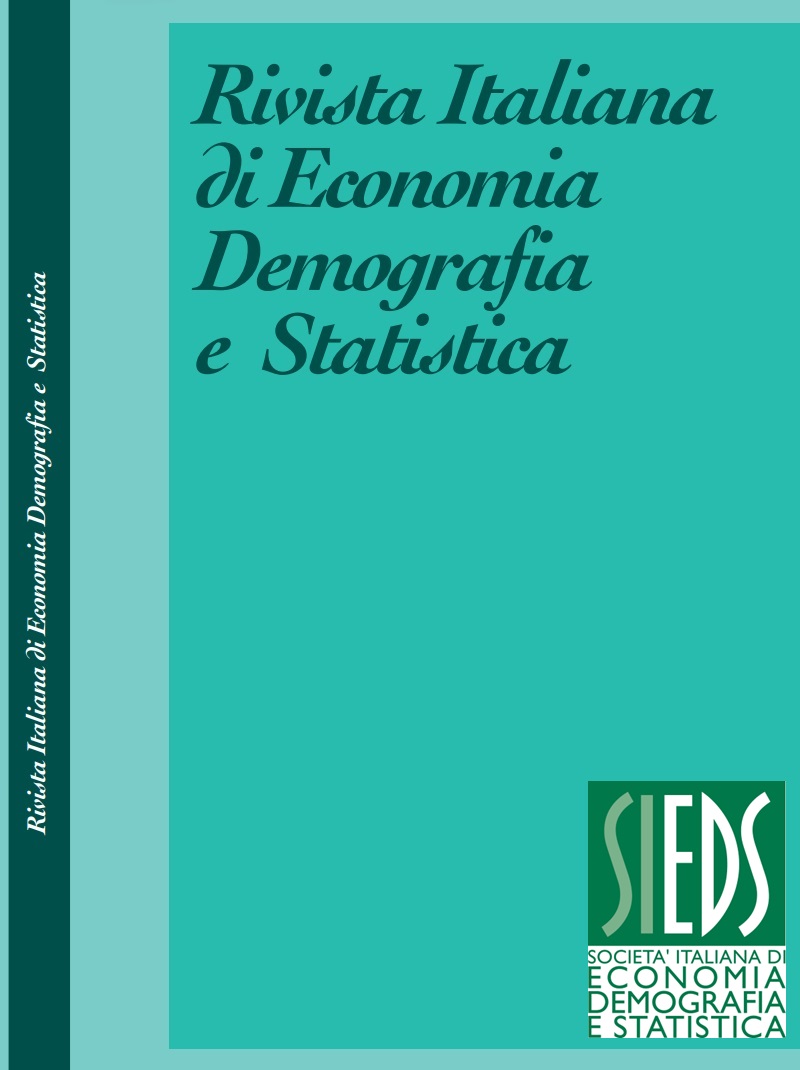Possible improvements in the estimation of IT-LFS through integration with the Registers System
DOI:
https://doi.org/10.71014/sieds.v79i1.290Keywords:
calibration, integration, administrative registersAbstract
In recent years, due to the increasing difficulties in maintaining high response rates and ensuring good representativeness of the collected samples, quality problems in surveys are getting more frequent. The impact on the final estimates is in terms of bias and lack of consistency between the different estimates. In recent decades, many NSIs have started to use administrative data, usually processed and organized in statistical registers, integrating them into statistical processes, with the aim of improving the quality of the output.
Availability of data coming from registers is increasing in the last years in Italy and it will improve even more in the next future.
The Registers should be exploited in statistical processes and in different phases: as frames for sample selections, to draw auxiliary variables needed in the estimation and to enrich the set of available information, through record linkage.
In this paper we focus on the evaluation of possible improvements on the accuracy in the IT-LFS exploiting the integration of auxiliary information coming from the ISTAT system of statistical registers. The Registers System (SIM) will be able to provide information about sex, age, citizenship, education level, employment signals and household structure for the resident population.
This more reliable information could be used through calibration in both the phases of estimation: treatment of total no response and final calibration.
For the no response treatment it would be possible to define constraints in a more flexible framework while, in the final calibration step, additional information about education level and employment signals coming from the register could be useful to improve different aspects of quality of the LFS estimates.
This experimental study is relevant to evaluate the possible improvements of the estimates and to collect evidences for introducing these changes in the next future.
The results show that with the proposed innovations the survey problems (MRT, bias) are addressed by improving the quality of the estimates.
References
DEVER J.A., VALLIANT R. 2010. A comparison of variance estimators for poststratification to estimated control totals, Survey Methodology, Statistics Canada, Catalogue No. 12-001-X, Vol. 36, No. 1, pp. 45-56.
DEVILLE J.C., SÄRNDAL C.E. 1992. Calibration Estimators in Survey Sampling, Journal of the American Statistical Association, Vol.87, No. 418, pp.376-382. DOI: https://doi.org/10.1080/01621459.1992.10475217
DI ZIO M. FILIPPONI D. 2023., Multi-source statistics in the Italian permanent census . In Proceedings of the Workshop on Methodologies for official statistics, Rome, pp.31-44.
FULLER W. A. 2002. Regression estimation for survey samples, Survey Methodology, Statistics Canada, Catalogue No. 12¬001¬XIE, Vol. 28,No. 1, pp.5¬23.
FULLER W.A., RAO J.N.K. 2001. A Regression Composite Estimator with Application to the Labour Force Survey, Survey Methodology, Statistics Canada, Catalogue No. 12¬001, Vol. 27, No. 1, pp. 45-¬51.
LUNDSTROM S., SÄRNDAL C.E. 1999. Calibration as a Standard Method for Treatment of Nonresponse, Journal of Official Statistics, Vol. 15, No. 2, pp. 305-327.
RENSSEN R.H., NIEUWENBROEK N.J. 1997. Aligning estimates for common variables in two or more sample surveys, Journal of the American Statistical Association, Vol 92, Issue 437, pp. 368-374. DOI: https://doi.org/10.1080/01621459.1997.10473635
Downloads
Published
Issue
Section
License
Copyright (c) 2025 Antonella Iorio, Alessandro Martini

This work is licensed under a Creative Commons Attribution 4.0 International License.



